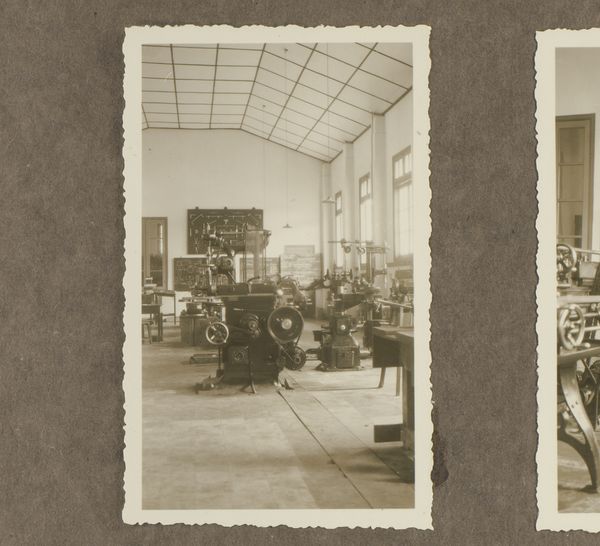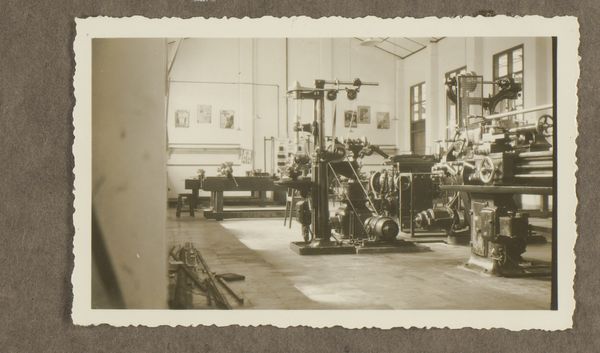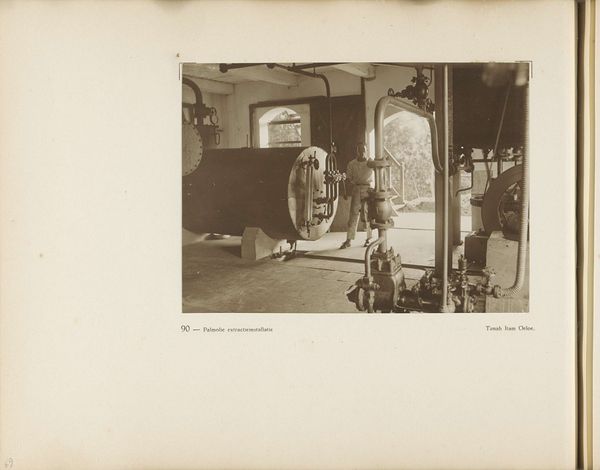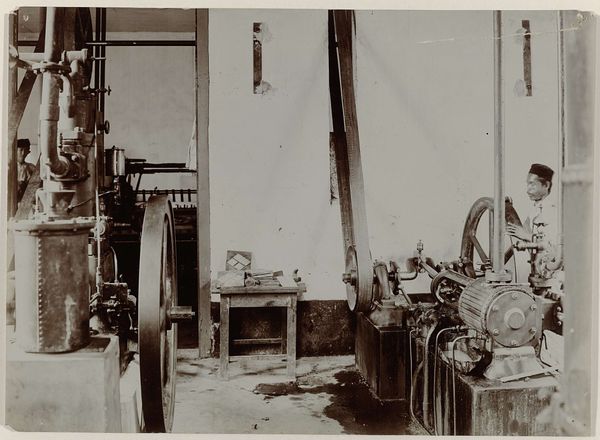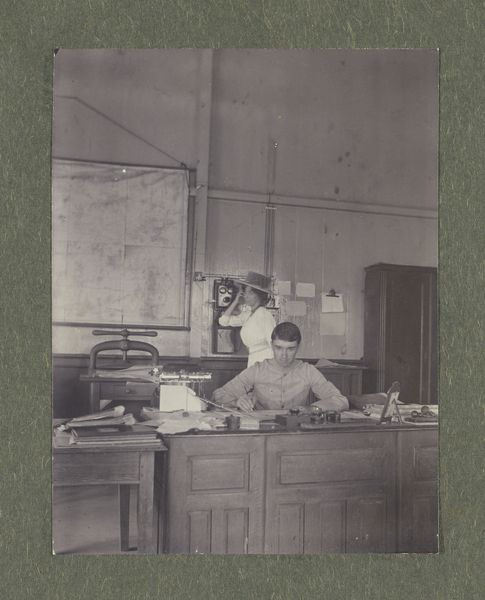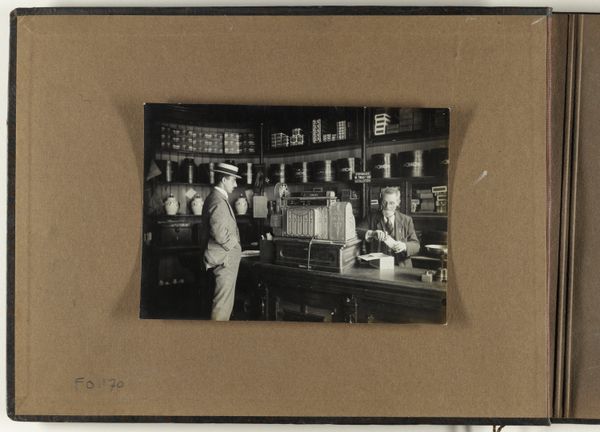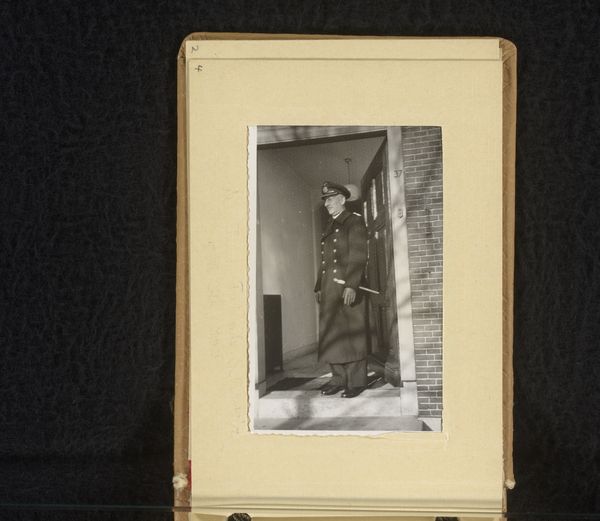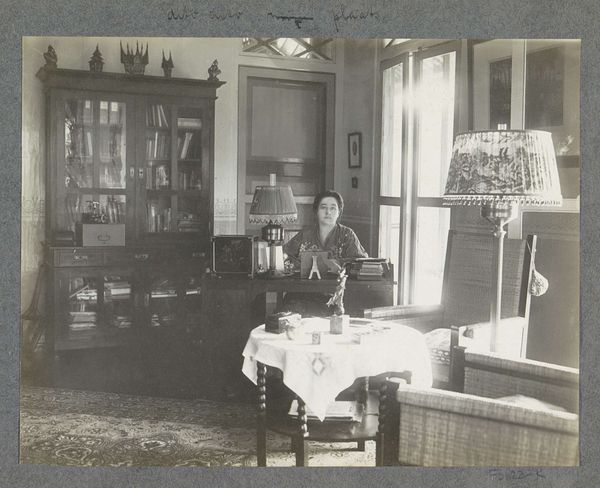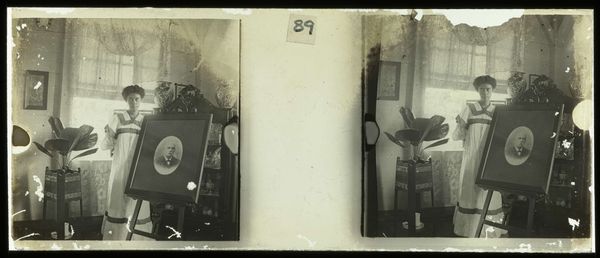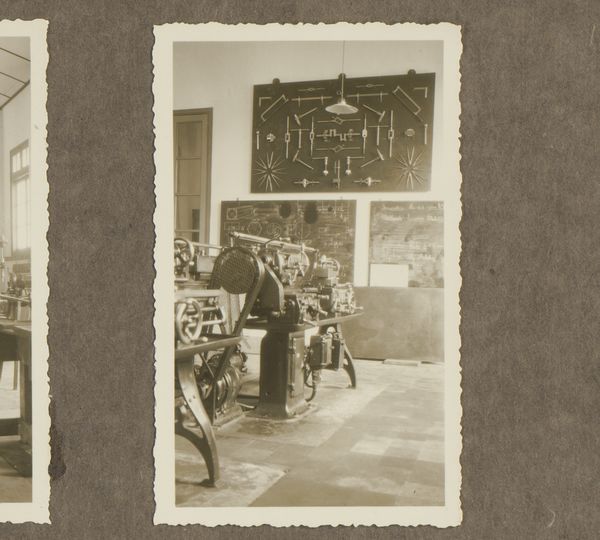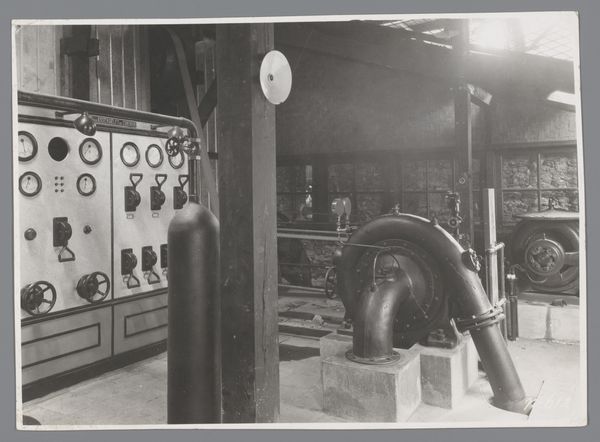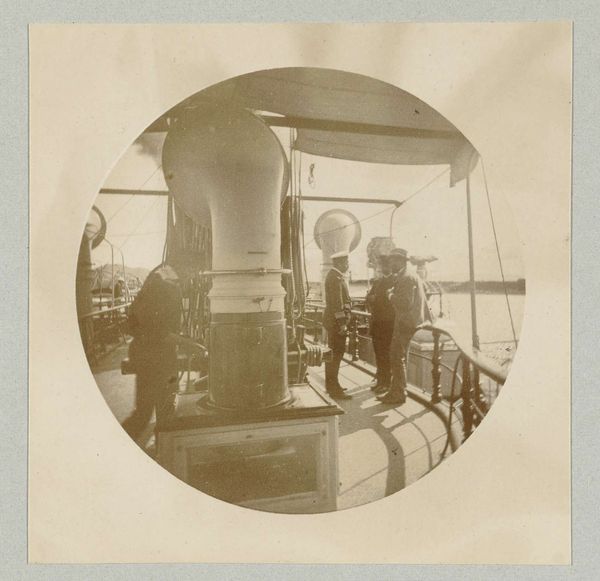
photography, gelatin-silver-print
#
still-life-photography
#
archive photography
#
photography
#
gelatin-silver-print
#
modernism
Dimensions: height 111 mm, width 70 mm
Copyright: Rijks Museum: Open Domain
Editor: This photograph, entitled "Machinekamer van de Technische School te Bandoeng", dates back to 1933 and looks like a gelatin-silver print. I'm struck by how it manages to make this machine almost monumental. What is it about the image that grabs you? Curator: For me, it's the photograph's starkness that reveals the societal implications. The coldness and geometric severity highlight the artist’s focus on machinery and the process of industrial labor itself, while it was celebrated as advancement, there was another part of society that was experiencing alienation by these same means of production. Look at how light is used – the reflection of steel contrasts with shadow to heighten that cold detachment. The choice of the gelatin-silver print accentuates texture, doesn't it? It’s less about the artistic eye, but about capturing industrial labor as a real function. Editor: Absolutely! The contrast almost renders the machine a character, or a silent protagonist that also reflects the colonial labor force in 1933 Indonesia. How do you think it connects to larger conversations happening within modernism, where similar subject matters became more pervasive and somewhat standardized? Curator: The emphasis on the materiality of industry—the gelatin-silver capturing the hard sheen of metal—shifts away from romantic ideals toward celebrating the machine’s tangible presence and it’s inherent alienating structure. Consider, too, who owned and controlled these means of production versus who operated them in the location. What class were these students in? How does that intersect with Modernism's global reach at this time? Editor: That makes perfect sense. The way it showcases the material—the sheer labor and production of resources for educational and colonial means—is striking. Curator: And forces us to confront who profits from, and who toils in, these spaces of “progress." I hadn't thought about this artwork that way until this conversation. Editor: Likewise. Thank you for your insightful analysis!
Comments
No comments
Be the first to comment and join the conversation on the ultimate creative platform.
